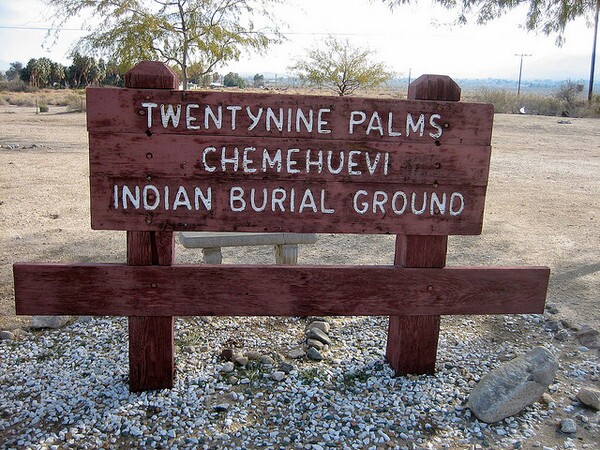Solar Project Would Infringe Tribes' Salt Songs

A large concentrating solar facility proposed for the Pahrump Valley section of Inyo County would seriously infringe on the practice of a Native religion, according to papers filed this week with the California Energy Commission (CEC). Richard Arnold, a member of the Pahrump band of Southern Paiutes, said in a summary submitted to the CEC of upcoming formal testimony that building the 3,277-acre concentrating solar project "will cause irreparable adverse impacts" to cultural landscapes important to the Pahrump Paiute and nearby Native people.
Arnold's comments, which preview formal testimony he will deliver during Evidentiary Hearings in mid-March, focus on the Southern Paiute's Salt Songs, a body of oral tradition that serves to tie Paiute and Chemehuevi culture to the landscape across the related tribes' territory in the desert Southwest.
Though Salt Songs number in the hundreds, and are diverse and hard to describe in generalizations, they work to provide the listener with a sense of his or her place not only in the landscape, but in time. Songs may describe historic events in a certain place, provide directions to water sources or other resources, or retell cultural myths. They're especially important in funerary rites. As Arnold says,
[T]he songs are used to maintain ecological and spiritual balance. The only way to fully understand the cultural dynamics and potential implications associated with these sacred songs are for all Southern Paiute/Chemehuevi to come together physically and spiritually to reach consensus on sustaining balance. These songs focus are intended to describe the landscape and beyond with special emphasis on 10 directions; four cardinal directions, up and down, past, present and future and lastly yourself as a Salt Song Singer or the persons and things along the journey. Because of the importance of these songs, all Southern Paiute/Chemehuevi people continue to rely on their importance.
As one might expect, massive changes to landscapes that are the subjects of Salt Songs affect the practice of singing those songs. Salt Songs sung during funerals are subject to very strict limitations that would be interfered with, says Arnold, if the landscape they describe is radically altered:
When sung at funeral ceremonies, Salt Singers describe each area along the journey and rely on their knowledge, understanding, memory and descriptions contained in the songs. The songs describe the cultural and spiritual resources and various locations in relation to the next area along the Salt Song Trail. During these rituals, areas including Hidden Hills are observed and visited by the singers, deceased individuals(s) while interacting with spiritual beings that know the trail system and watch over the area. This is accomplished through an understood sequence that can have no deviation or modification.
The singers include descriptions of the landscape taken from culturally important high vantage points in nearby mountains, and many of those vantage points would have their views changed substantially were Hidden Hills to be built.
Arnold, who worked for some decades as the Executive Director of the Las Vegas Indian Center, points out that project proponents and agency staff haven't done enough to examine the cultural implications of the project. Among other measures, he suggests that mitigation -- should Hidden Hills be built -- should include BrightSource, the company behind the project, buying at least 3,000 acres of land similar in cultural importance for transfer to and management by the Pahrump Paiute.


